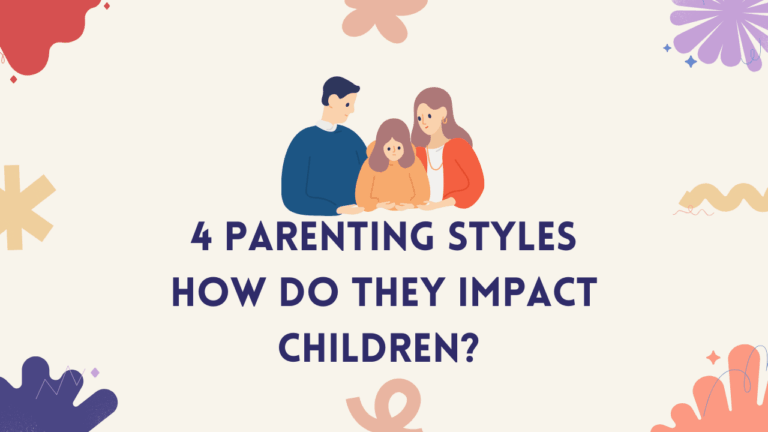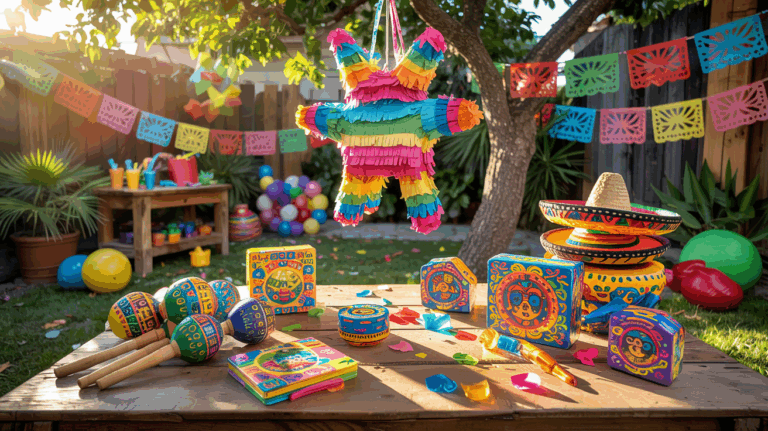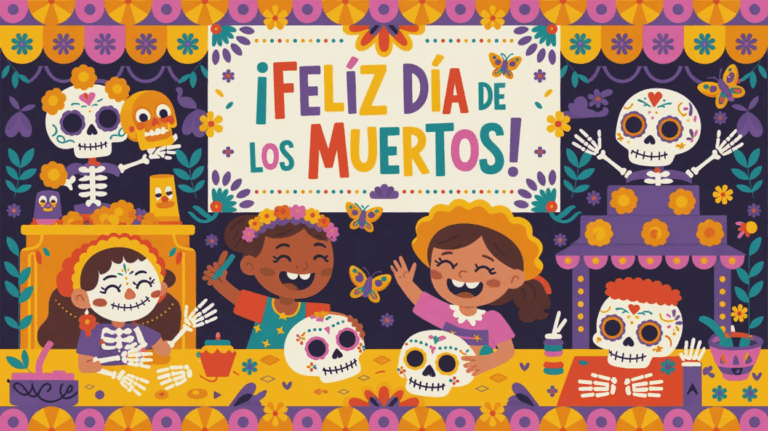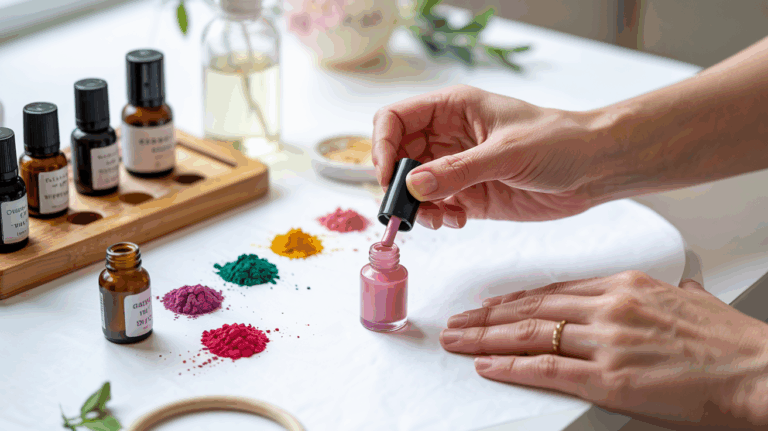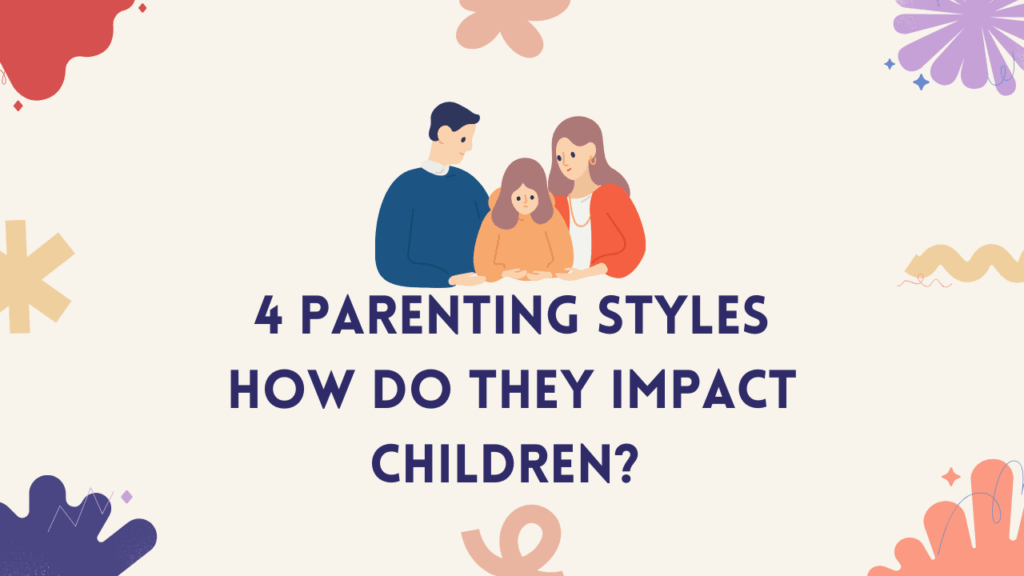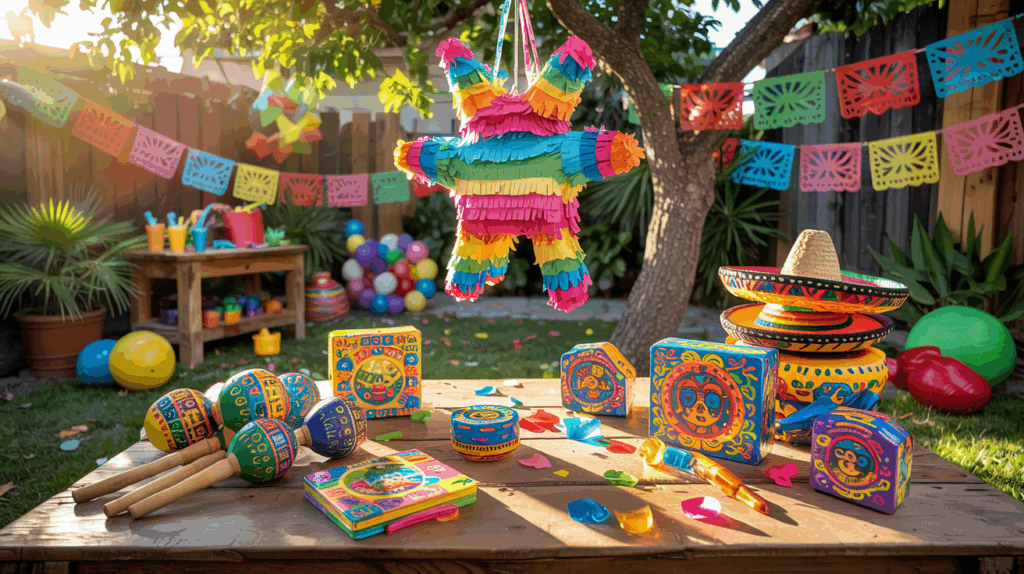Have loads of random facts bouncing around in your head? The kind of useless-but-impressive knowledge that wins pub quizzes, sparks weird dinner table debates, or makes people say, “How do you even know that?” Time to stop hoarding it, and start printing it.
Creating your own trivia book isn’t just possible these days, it’s actually simple. Whether you’re making a one-off gift, planning a games night with a twist, or looking to sell your own quirky quiz books online, this guide will walk you through the whole thing step-by-step.
You’ll learn how to:
- Pick the perfect trivia theme
- Write your questions
- Design a fun and professional-looking layout
- And finally, get it properly printed, no office staplers required
The best part? It’s a project that’s as fun as it is useful. You can make it personal, make it profitable, or just make people laugh. And once you print a book, it’s something you can actually hold in your hands, not just another digital file lost in a folder.
Why Make a Trivia Book?
Before we dive into the how, let’s look at the why, because once you realise the possibilities, you’ll be itching to start.
It’s a Unique Gift Idea
Forget socks, candles, or another bottle of wine — a custom trivia book is completely original. Imagine gifting a book full of inside jokes, personal questions, or themed trivia based on someone’s favourite films. Whether it’s for Christmas, a birthday, or a stag do, it’s one of those presents people remember.
It’s Perfect for Educators, Event Planners & Families
Teachers can use them in the classroom. Event organisers can make one for quiz nights. Parents can create a book filled with fun educational trivia for the kids. Even family reunions or holidays become better when there’s a themed trivia book to spark laughter (and probably arguments).
It’s a Passive Income Opportunity
You can actually sell trivia books. On Etsy, Amazon KDP, your own website, or even at local markets. Find a niche (more on that soon), package it up nicely, and people will buy it. It’s low-cost to produce and easy to scale once you’ve got a system down.
It Immortalises Your Obsession with Weird Facts
We all have that one mate who knows way too much about dinosaurs, old video games, or obscure British laws. If that’s you, lean into it. A trivia book allows you to channel that brilliant nonsense into something creative and lasting.
Step 1 – Choose a Trivia Theme
Alright, let’s get into it. Step one is deciding what your trivia book will actually be about.
Do you go broad with general knowledge or lean into a specific niche? Do you keep it PG for the kids or make it a rowdy party book for adults? Here’s how to figure it out.
Popular Trivia Themes
You can never go wrong with a classic. These are broad categories that pretty much everyone loves, and they’re great if you want mass appeal or plan to sell the book.
- TV & Movies
Think Friends, The Office, Game of Thrones, cult horror, Disney films — or mix it up with “Name the film from the quote” rounds and actor trivia. - Food & Drink
Perfect for foodies. Quiz people on famous dishes, ingredients, world cuisine, cocktail recipes, or absurd food laws (like the UK law that says you can’t handle salmon suspiciously, yes, that’s real). - History & Geography
Great for teachers, trivia purists, or anyone who knows what year the Battle of Hastings was (bonus points if they know it wasn’t actually in Hastings). You can create rounds on ancient civilisations, wars, inventions, or flags. - Music
Who sang it? What’s the lyric? Which album cover is this? Music trivia can range from classic rock and 80s synth to obscure one-hit wonders and viral TikTok hits. - General Knowledge
A bit of everything. It’s the easiest to create and the most versatile for all audiences, great for family games, pub quizzes, or icebreakers.
Step 2 – Write or Collect Your Questions
Once you’ve nailed your theme, it’s time to start building your trivia arsenal. The quality (and variety) of your questions is what’ll make your book stand out, whether it’s meant to be fun, challenging, educational, or downright weird.
Sources of Questions
You don’t have to write every single question from scratch (unless you want to). There are loads of ways to gather questions while still keeping your book original:
- Your own brain: Start with what you already know, past quiz nights, pub trivia, random facts you’ve collected.
- Google: Search for “[your theme] trivia questions” and see what’s out there. Use them as inspiration or a starting point.
- Trivia books & YouTube: Great for finding unique and lesser-known facts. Just be sure to rewrite in your own words if you’re repurposing.
- AI tools (like ChatGPT): Ask it to generate quiz questions in your theme, you can even specify difficulty levels or formats.
- Quiz platforms: Websites like Quizlet, Kahoot, or Triviamaker are packed with quizzes you can study, remix, or adapt.
Types of Questions
Don’t be afraid to mix and match formats, it keeps the reader engaged and breaks up the monotony.
- Multiple Choice: Easy to read and play. Great for casual readers or younger audiences.
- True or False: Simple and quick. Ideal for warm-up rounds or quickfire sections.
- Fill-in-the-Blank: Slightly tougher. Good for trivia pros or “finish the lyric” style questions.
- Visual Questions: Add in picture rounds, emoji puzzles, or even charts. These can be brilliant if you’re printing in colour.
Top Tip: If you’re printing in black & white to save money, make sure any visuals still look clear in greyscale!
Sample Round: Fast Food Fails
Here’s a short example round you could include in a quirky trivia book:
Round 3 – Fast Food Fails
- Which fast-food chain once tried to sell bubblegum-flavoured broccoli?
- A) Burger King
- B) McDonald’s
- C) Subway
- D) Wendy’s
Answer: B) McDonald’s
- True or False: KFC once ran out of chicken in the UK.
Answer: True (it happened in 2018, and people were furious) - What year was the first McDonald’s opened?
- A) 1930
- B) 1948
- C) 1962
- D) 1975
Answer: B) 1948
- Fill in the blank: “Have it your ___” is the famous Burger King slogan.
Answer: Way - Which of these ingredients was removed from Subway bread after being found in yoga mats?
- A) L-Cysteine
- B) Azodicarbonamide
- C) BHT
- D) Xanthan gum
Answer: B) Azodicarbonamide
Step 3 – Organise Your Questions
You’ve got a pile of brilliant questions — now it’s time to shape them into a book that actually flows. How you structure it depends on your goal: is it for solo play, quiz nights, family fun, or competitive scoring?
Suggested Layouts
Here are a few formats to consider:
- Chapters by Topic
Organise questions into themed sections: “Round 1 – Movie Quotes,” “Round 2 – Ridiculous Laws,” etc. Makes the book easy to dip in and out of. - Rounds with Increasing Difficulty
Start with easy warm-up rounds and build towards more brain-busting challenges. Great for competitive books or game night formats. - Quiz Night Structure
A classic format: 10 questions per round, 5–10 rounds total, with answer sheets or scoring sections at the back. Perfect if you’re recreating a pub quiz experience. - Mixed Bag
If you want something more spontaneous, jumble everything together for a “lucky dip” trivia experience. Works well for casual readers and family-friendly formats.
Pro Tip: Add page numbers and a contents page so readers can jump to their favourite themes.
Step 4 – Design & Format the Book
This is where your trivia book goes from looking like a school project to feeling like a real, professional product. Don’t stress, you don’t need to be a graphic designer to make it look slick.
Tools to Use
- Canva (Free & easy): Excellent for visual layouts, especially with graphics and icons. Great for beginners.
- Google Docs / MS Word: Reliable, simple, and you can export directly to PDF. Ideal for text-heavy books.
- Affinity Publisher Cheaper alternative to Adobe InDesign with professional tools.
- Adobe InDesign: The gold standard for publishing pros. Best if you’re planning to do lots of books or want full control over layout.
Formatting Tips
- Use a clean, readable font: Avoid anything too wacky. Sans-serif fonts like Lato, Open Sans, or Arial work well.
- Leave breathing space: Don’t cram too much onto each page. Use line spacing and margins to keep things comfortable.
- Add page numbers and headers: Especially important for longer books or those with chapters.
- Include fun elements: Icons, dividers, illustrations, or doodles add personality.
- Leave space for answers or notes: If your book is meant to be interactive, make sure there’s enough room for people to write or tick answers.
Bonus Tip: If you’re printing in black and white to save money, do a quick print preview in greyscale to make sure everything still looks sharp and readable.
Step 5 – Add the Answers
The questions are done, and your design is looking sharp. Now it’s time to decide where the answers go. It sounds simple, but the placement of your answers can completely change how people interact with your book.
Option 1: At the End of Each Round
This is one of the most popular layouts for quiz night-style books. You place 10–15 questions on a page or two, then follow it with a single page that lists all the answers.
Pros:
- Keeps the suspense alive while playing
- Easy to reference without spoiling upcoming rounds
- Great for group or team play
Ideal for:
Pub quiz-style books, themed rounds, or team-based gameplay.
Option 2: All Answers at the Back
If you want to keep the main section of your book “clean” and avoid clutter, placing all the answers at the very end is the way to go.
Pros:
- Keeps the book tidy and easy to navigate
- Encourages players not to peek
- Adds a classic quiz book feel
Ideal for:
Books designed for solo use, educational books, or print-on-demand titles with limited page space.
Option 3: With Fun Facts or Commentary
This approach adds extra value and turns your trivia book into more than just a quiz. Include little nuggets alongside each answer, something surprising, funny, or just plain weird.
Example:
Answer: B) McDonald’s
Bonus Fact: In 2014, McDonald’s tested bubblegum-flavoured broccoli to encourage kids to eat vegetables. It didn’t go well.
Pros:
- Makes your book more engaging
- Adds entertainment value
- Boosts re-readability
Ideal for:
Books aimed at families, humour-loving audiences, or readers who enjoy learning something new.
Pro Tip: Be consistent with your layout; readers appreciate structure, especially when flipping between sections.
Step 6 – Print Your Trivia Book
Once your book is designed, polished, and answers are in place, it’s time to print. And there are more options than ever — whether you’re printing a single gift copy or producing 100+ to sell.
Option 1: Amazon KDP
Amazon’s Kindle Direct Publishing (KDP) allows you to upload your book and sell it on Amazon in paperback format.
Pros:
- Completely free to use
- Global distribution
- No need to handle stock or shipping
Cons:
- Limited control over paper and binding quality
- No hardback option unless you go through their expanded distribution
- Royalty margins can be small
Best for:
Authors focused on online sales with minimal upfront cost.
Option 2: Print at Home
You can always print a copy yourself using a decent home printer, some good-quality paper, and maybe a binding machine or folder.
Pros:
- Instant results
- Cost-effective for 1–2 copies
Cons:
- Low durability and not very professional
- Can be fiddly and time-consuming
- Doesn’t scale well
Best for:
Prototype copies, test layouts, or budget one-offs.
Option 3: Short-Run Professional Printing
Short-run printing allows you to print as few as one copy, or scale up to hundreds, without committing to the massive minimum order quantities you’d get with traditional offset printing. It’s perfect for personal projects, limited edition runs, or small businesses testing the waters.
Look for a short-run book printer that offers:
- Easy PDF upload with instant pricing — so you can get a quote without jumping through hoops
- Flexible print volumes — from a single copy to full batches for retail
- Binding options — including paperback or hardback
- High-end finishes — like thread-sewn binding for durability and a premium feel
- Black & white or full colour printing — depending on your layout and budget
- Eco-conscious materials — FSC-certified paper, recycled stock, or plastic-free packaging
- Fast turnaround — to avoid long waits, especially during gifting seasons
This option strikes a perfect balance between quality and flexibility. Whether making a custom trivia book for a party, launching a niche quiz series, or creating a polished product to sell online, this route allows you to bring your idea to life without breaking the bank or printing more than you need.
Bonus Tips & Creative Ideas
Want to take your trivia book to the next level? These little extras can elevate it from “pretty cool” to “I NEED this.”
Add Illustrations or Visual Puzzles
Include picture rounds, emoji-based quizzes, or even illustrated questions. They add variety and make your book feel more interactive, especially if you’re printing in colour.
Include Score Tracking Pages
Add a score sheet after each round, or a leaderboard page for multiple players. This is perfect for competitive quiz nights or repeat play-throughs.
“Winner Gets…” Ideas
For party editions, include a fun “winner prize” page with suggestions like:
- “Winner gets out of doing the washing up.”
- “Loser must perform a dramatic reading of their last text message.”
Special Editions
Offer a deluxe version of your book with:
- Foil blocking on the cover
- Dustjackets for hardbacks
- Matte vs gloss lamination
- Ribbon bookmarks or metallic inks
Great for special occasions or collectors.
Bundle with Extras
Turn your trivia book into a product line:
- Add matching bookmarks
- Create printable PDFs to go with the physical book
- Offer themed stickers or tote bags
- Include a digital version with purchase
Sell Your Book Online
Once you’ve printed a few copies, you can:
- Sell on Etsy
- Launch your own website or Shopify store
- Approach local bookshops or gift stores
- Offer it as part of a digital product bundle
Trivia books are easy to market, cost-effective to print, and endlessly customisable, a solid side hustle if you find your niche.
Creating your own trivia book isn’t just a fun weekend project — it’s a genuinely rewarding way to bring your creativity to life. Whether it’s filled with fast food facts, film quotes, or your own family’s inside jokes, a trivia book is one of the most versatile, entertaining things you can make.
You don’t need to be a professional writer or a design wizard to pull it off. With a bit of planning, some clever questions, and a good layout, anyone can create a quiz book that looks and feels like the real deal.
It’s easy. It’s fun. It’s yours.
So why not start today?
Pick a theme you love, jot down your best questions, design something fun, and when you’re happy with it, take that final step and get it printed. Seeing your ideas bound in a proper book is something special. Whether you’re making one copy for yourself or producing a small run to sell or share, there are great printing options out there to suit any scale or style.




